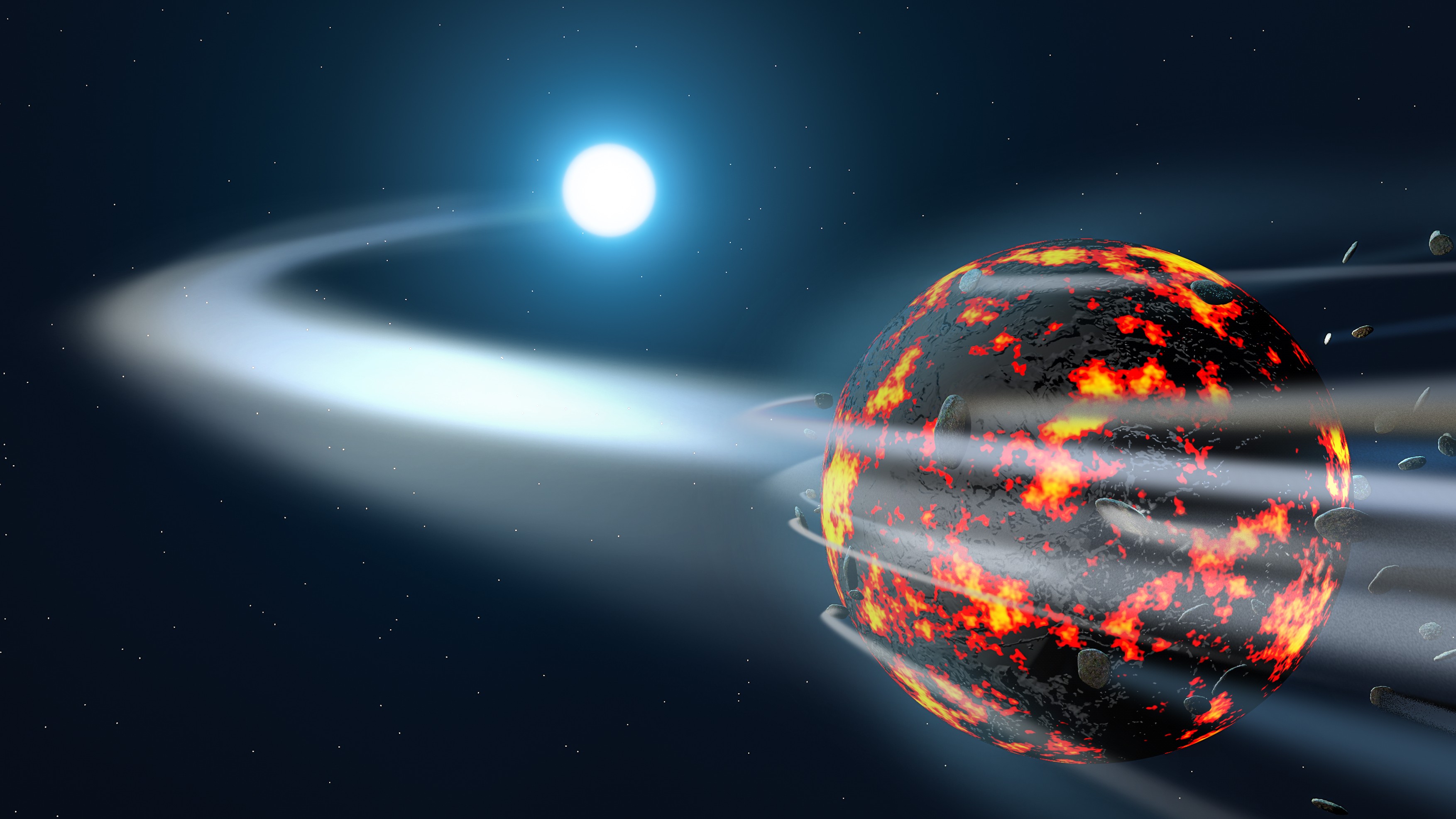Crushed-up planets around dead stars could rewrite the history of the solar system
A new study of white dwarfs with "polluted" atmospheres is causing scientists to rethink how and when planets form.

Planets may have begun forming in our solar system when the sun was still young — millions of years earlier than previously thought, a new study of long-dead stars suggests.
In the study, published Monday (Nov. 14) in the journal Nature Astronomy, astronomers analyzed the mixture of different elements in the atmospheres of more than 200 white dwarfs — dead, dim husks of stars that were once as massive as our sun, or larger.
The study authors found clear evidence that these stars were "polluted" with heavy elements like iron, magnesium and calcium. According to the authors, white dwarfs typically have pristine atmospheres, and these elemental anomalies could only result from collisions with ancient asteroids called planetesimals — the rocky building blocks of early planets — that burned up in the stars' atmospheres eons ago.
This is not the first time that white dwarfs have been caught wearing the corpses of would-be planets in their atmospheres. However, the types of elements detected in these particular stars suggest that the burnt-up planetesimals once had iron cores, meaning they had gone through the long process of melting and hardening known as differentiation — the same process that gave Earth its rocky mantle and iron core billions of years ago.
In order to have endured this long melting process, those iron-cored planetesimals must have formed within the first million years of their solar systems' lives, the researchers wrote — far earlier than most models of planet formation suggest.
"The cause of the melting can only be attributed to very short-lived radioactive elements, which existed in the earliest stages of the planetary system but decay away in just a million years," lead study author Amy Bonsor, an astronomer at Cambridge University in the U.K., said in a statement. "In other words, if these asteroids were melted by something which only exists for a very brief time at the dawn of the planetary system, then the process of planet formation must kick off very quickly."
Today's leading theories of planet formation suggest that planets originate from icy disks of gas and dust that orbit young stars; over time, tiny particles in these disks stick together, forming ever-larger objects. Eventually, rocky planetesimals emerge. Some of these planetesimals continue to accrete matter from their surroundings, becoming planets, while others remain as asteroids — like the ones that apparently crashed into the white dwarfs in the new study.
Get the world’s most fascinating discoveries delivered straight to your inbox.
Most theories hold that planetesimals don't appear in a solar system until their host star has already reached its final size, many millions of years after the star's birth. But this new study suggests that that cannot always be the case; in order for a dead star to contain the remains of iron-rich asteroids in its atmosphere, then that star and its planetesimals must "grow up together," the study authors wrote. And that pushes back the start of planet formation by millions of years.
"Our study complements a growing consensus in the field that planet formation got going early, with the first bodies forming concurrently with the star," Bonsor said. This type of planet formation may be "ubiquitous" among solar systems, including our own, she added.
That doesn't mean that Earth, or any other planet, is older than was previously thought; the study's findings only suggest that the physical process of planet formation begins much earlier than prevailing models have claimed.

Brandon is the space / physics editor at Live Science. With more than 20 years of editorial experience, his writing has appeared in The Washington Post, Reader's Digest, CBS.com, the Richard Dawkins Foundation website and other outlets. He holds a bachelor's degree in creative writing from the University of Arizona, with minors in journalism and media arts. His interests include black holes, asteroids and comets, and the search for extraterrestrial life.


